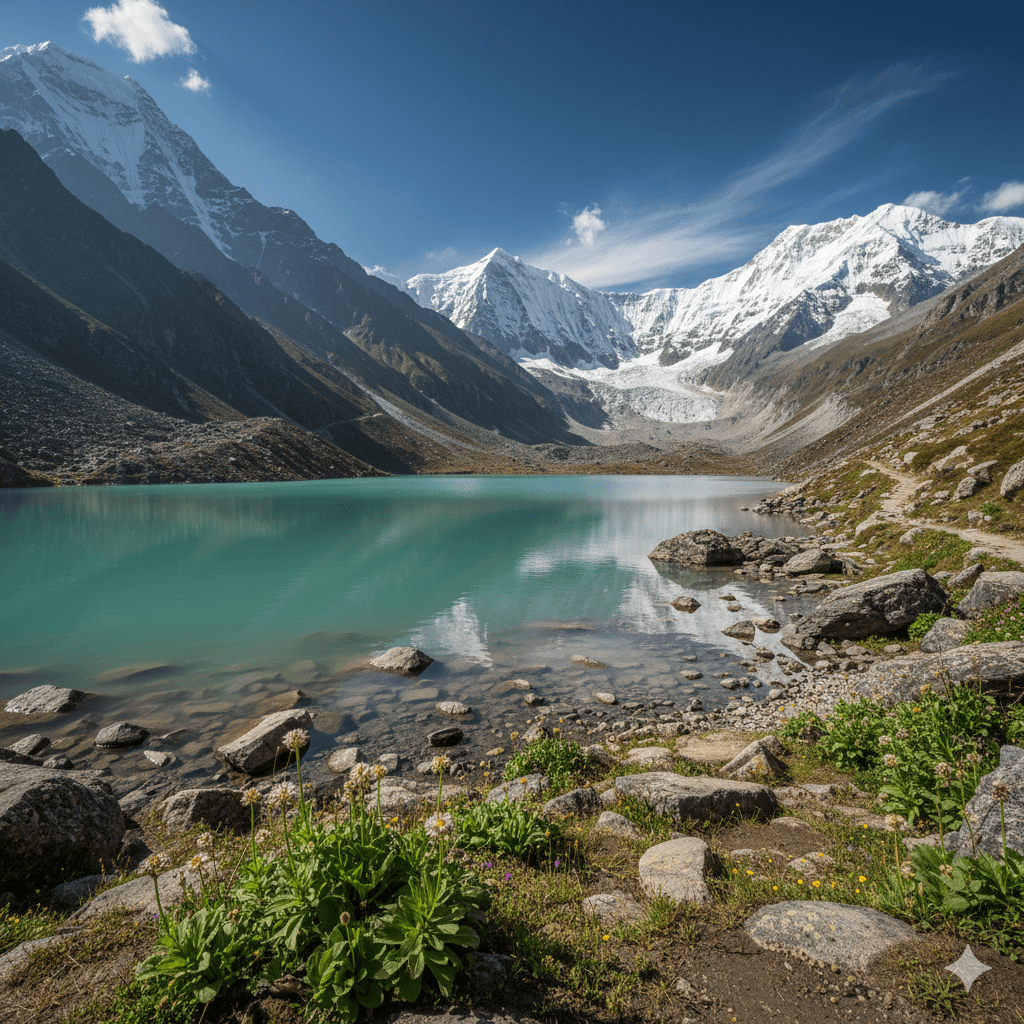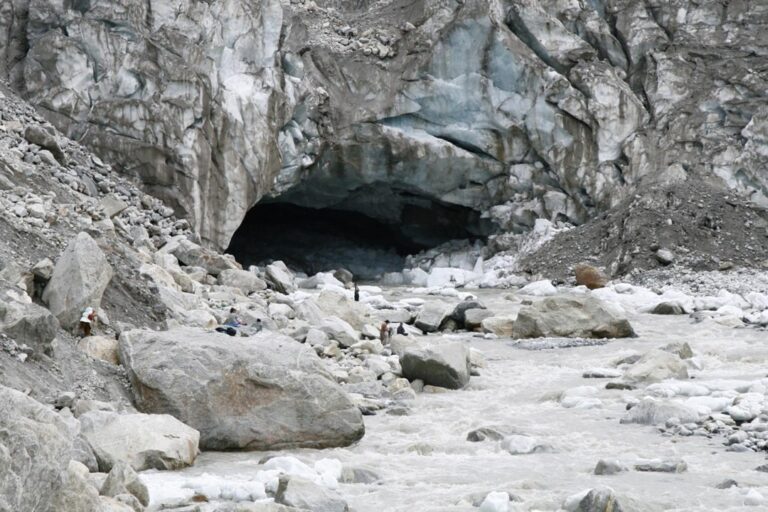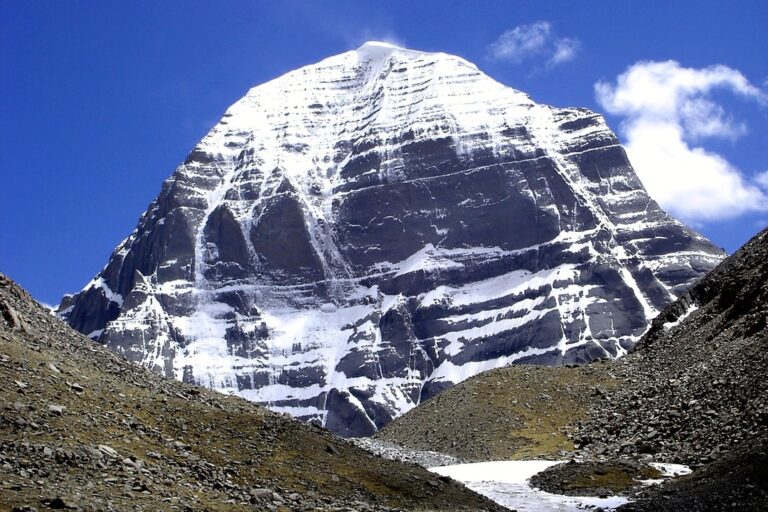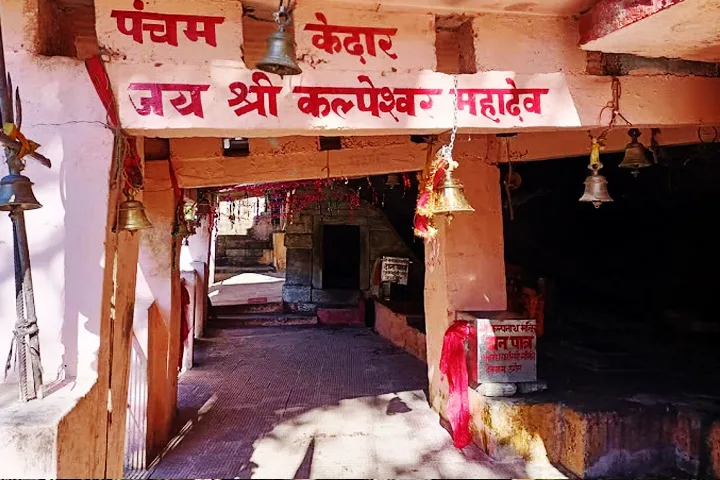Vasuki Tal Yatra

Introduction
Vasuki Tal Yatra is a sacred high-altitude pilgrimage and trek in the Garhwal Himalaya that combines deep devotion with rugged mountain beauty. Named after Vasuki, the king of serpents who is closely associated with Lord Shiva, the journey leads seekers to a pristine glacial lake — Vasuki Tal (Vasuki Taal) — set amid towering peaks, prayer-filled silence and ancient Himalayan energy. For devotees, this is not only a physical trek but a spiritual passage where the presence of Lord Shiva and the protective serpent-energy of Vasuki are strongly felt.
Mythology & Spiritual Significance
Local tradition holds that Vasuki Tal is sanctified by the penances of great sages and by the blessings of Lord Shiva. Vasuki — the serpent who adorns Shiva’s neck — is believed to have performed austerities here. The lake and surrounding meadows have long been regarded as places where Shiva rested, meditated, and blessed the land with purification and protection. Pilgrims come to seek relief from karmic burdens and to receive the calm, transformative presence that the place radiates.
Spiritually, Vasuki Tal is venerated as a place of purification, interior reflection and healing. Many devotees report a strong sense of clarity and surrender after meditating beside the lake. Ancient chants and mantras are traditionally recited here to connect with the healing energies of Shiva and Vasuki.
Geography & Altitude
Vasuki Tal lies in the high glacial zone of the Garhwal Himalaya within the Gangotri region. The lake is surrounded by jagged peaks, meadows and the moraine fields of nearby glaciers. Because of its elevation and glacial setting, Vasuki Tal is seasonal and best visited during the clear months when snow and weather make access possible. Expect alpine terrain, scree slopes and fragile high-altitude ecology.
Trek Overview & Route
The commonly undertaken approach for pilgrims and trekkers starts from Gangotri (the temple town dedicated to Ganga Mata) and follows the trail used for Gaumukh and Tapovan-style yatras. A typical route is:
- Gangotri → Chirbasa
- Chirbasa → Bhojwasa (or Sumeru / Nandanvan approaches depending on the exact trail)
- Bhojwasa → Nandanvan (high meadows)
- Nandanvan → Vasuki Tal (final ascent to the lake)
Total trekking distance (one-way) varies by exact trail choice but is typically in the range of 18–28 km from Gangotri, with overnight halts at Bhojwasa and Nandanvan. Terrain can include river crossings, rocky moraines, steep ascents and alpine meadows.
Distance, Difficulty & Time Required
- Duration: Most organized pilgrimages allot 5–7 days for the round trip from Gangotri, including acclimatization.
- Difficulty: Moderate to strenuous — suitable for regular trekkers and spiritually motivated pilgrims with basic trekking experience.
- Altitude: Vasuki Tal is high-altitude (the surrounding region lies above 3,800–4,200 m). Proper acclimatization is essential.
Permits & Permissions
Vasuki Tal falls within protected Himalayan terrain and in many sections inside or near the Gangotri National Park or areas monitored by the Forest Department. Visitors must obtain the required permissions before embarking:
- Forest / Park Permit: Apply at the District Forest Office (Uttarkashi) or the local Gangotri National Park office. Some permits are issued at the Gangotri checkpost.
- Trekking Permissions: If you join a licensed trekking operator, they will typically arrange permits on your behalf.
- Restricted Zones: Parts of the route may be regulated seasonally — always confirm with the Forest Department for the current year’s rules.
Tip: Obtain permits well in advance during the busy season and keep printed copies/photocopies with you at all times.
Documents Required
- Valid photo ID (Aadhaar / Passport / Driving License)
- Recent passport-size photographs (2–4)
- Medical fitness certificate (recommended, sometimes required by operators)
- Permit printouts issued by the Forest Department or the local authority
- Emergency contact details and identification for your trekking group
Eligibility & Fitness
Adequate physical fitness is required. Recommended preparations:
- Regular cardiovascular exercise (walking, jogging) for 4–8 weeks before the trek.
- Practice hikes with a loaded daypack to build leg strength and stamina.
- Basic experience with multi-day treks or at least day treks at higher altitudes.
- Consult your doctor if you have any chronic health conditions (heart, lung, severe asthma).
Best Time to Visit
- May – June: Pre-monsoon window with clear skies and accessible trails.
- September – October: Post-monsoon window; stable weather, fresh views after monsoon.
- Avoid heavy monsoon months (July–August) due to landslides and avalanche risk, and winter months (November–April) due to deep snow and trail closure.
Detailed Day-wise Itinerary (Sample 6-Day Program)
- Day 1 — Arrival at Uttarkashi / Drive to Gangotri: Travel from Rishikesh / Uttarkashi to Gangotri (3,100 m); temple darshan, last minute checks, overnight at Gangotri.
- Day 2 — Gangotri to Bhojwasa (or Chirbasa): Trek begins; moderate walk through forests and river trails; camp at Bhojwasa for acclimatization.
- Day 3 — Bhojwasa to Nandanvan: Ascend into alpine meadows; panoramic views of glaciers and peaks; overnight in tents or basic guest facilities.
- Day 4 — Nandanvan to Vasuki Tal (and return to Nandanvan): Final ascent to the sacred lake for rituals, meditation, mantra japa and darshan; return to Nandanvan for night.
- Day 5 — Nandanvan to Bhojwasa: Gradual descent, time for reflection and devotional singing en route; overnight at Bhojwasa.
- Day 6 — Bhojwasa to Gangotri / Drive back to Uttarkashi: End of trek; temple offerings at Gangotri and onward travel home.
Note: Some itineraries include additional rest/acclimatization days and may vary by operator and group fitness.
Accommodation & Facilities
Accommodation in remote stretches is basic:
- Gangotri: Guest houses, dharamshalas and small hotels.
- Bhojwasa / Nandanvan: Tented camps arranged by operators, seasonal shepherd huts or basic GMVN/Forest rest shelters where available.
- Vasuki Tal: No permanent lodges — only camping (sleeping bags, insulated mats, communal tents provided by operators).
Catering is usually simple vegetarian fare — khichdi, dal, rice, rotis, soups and dry fruits. Carry energy snacks and any personal dietary supplements you need.
Spiritual Practices, Rituals & Mantras
Vasuki Tal is a place for quiet devotion. Common spiritual practices include:
- Bathing / Washing Hands: If water is accessible and permitted, a respectful symbolic wash is performed — many devotees perform small ritual ablutions with purified water containers rather than full dips.
- Mantra Japa & Meditation: Recitation of Shiva mantras and serpent mantras is traditional. Recommended chants:
“Om Namah Shivaya” — a primary mantra to invoke Lord Shiva.
“Om Vasuki Devaya Namah” — to honor Vasuki Nag and the serpent energy of protection.
Offerings are simple and symbolic — flowers, bilva (if available), incense, and a small donation to the local shrine or priest. Many pilgrims also perform charitable acts (feeding local porters or donating to ashrams) as part of seva.
Cost & Trek Packages
Costs vary depending on group size, operator and included services. Typical ranges:
- Organized group (basic): ₹8,000 – ₹15,000 per person (includes permits, camping, guide, basic meals, and transport from Gangotri).
- Private or premium packages: ₹15,000 – ₹30,000+ per person (better tents, meals, experienced guides, and private transport arrangements).
Government run or GMVN packages may be available at standardized rates; always confirm what is included (permits, rescue insurance, medical support, oxygen availability).
Preparation & Packing Checklist
- Valid identification + permit copies
- Layered clothing (base thermal layers, fleece, down jacket)
- Waterproof outer shell / rain jacket
- Sturdy trekking boots + gaiters
- Warm hat, gloves, woollen socks
- Sleeping bag rated for sub-zero temperatures
- Backpack (40–60 L) plus daypack
- First-aid kit, blister care, personal medications
- Altitude sickness medication (consult physician before taking Diamox or alternatives)
- Water purification tablets or filter
- Solar charger / power bank, headlamp, trekking poles
- Light snacks, energy bars, dry fruits
- Small puja kit: flowers, incense, small cloth for offerings
Safety, Health & Altitude Guidelines
- Acclimatize gradually. Do not ascend rapidly; allow your body 24–48 hours to adjust at intermediate camps.
- Recognize symptoms of Acute Mountain Sickness (headache, nausea, dizziness, breathing difficulty). If symptoms worsen, descend immediately.
- Carry sufficient warm clothing — hypothermia is a real risk at night.
- Use sunscreen and sunglasses — UV intensity is high at altitude.
- Travel with an experienced guide and a reputable operator; know the locations of nearest medical help and evacuation plans.
- Respect local ecology: do not litter, avoid plastic where possible, and follow Leave No Trace ethics.
Nearby Sacred Places & Extensions
- Gangotri Temple: The western gateway of the Bhagirathi — begin your pilgrimage here with prayers to Ganga Mata.
- Gaumukh & Tapovan: For those who want to extend the spiritual experience to the origin of the Ganga and the Tapovan meadows.
- Kedartal / Bhagirath Kharak: Other nearby high-altitude lakes and shrines for Shiva devotees and trekkers.
Visitor Information & Contacts
- Region: Gangotri National Park / Uttarkashi District, Uttarakhand, India
- Nearest Major Hub: Uttarkashi (road access), Rishikesh (rail/road connection)
- Nearest Airport: Jolly Grant Airport, Dehradun (approx. 220–260 km to Gangotri by road)
- Permit Authority: District Forest Office, Uttarkashi / Gangotri National Park Office
- Emergency Services: Carry local emergency numbers provided by your operator; keep group leader contact saved.
Responsible Pilgrimage & Ethics
Vasuki Tal is ecologically fragile and spiritually sensitive. Pilgrims are asked to:
- Respect local customs and traditions.
- Avoid loud music or disruptive behavior near sacred spots.
- Carry back all non-biodegradable waste and minimize single-use plastics.
- Support local porters and communities fairly and with gratitude.
Conclusion & Blessings
The Vasuki Tal Yatra offers seekers a rare convergence of Himalayan majesty and deep spiritual resonance. To stand by the still waters of Vasuki Tal, to chant the ancient mantras and to feel the cool mountain air in the presence of Shiva’s energy, is to touch a timeless mystery. This journey cleanses the heart, sharpens the mind and opens the soul to silence and devotion.
May Lord Shiva and Vasuki Nag bless every pilgrim with courage, purity, and spiritual awakening. Om Namah Shivaya. Om Vasuki Devaya Namah.



